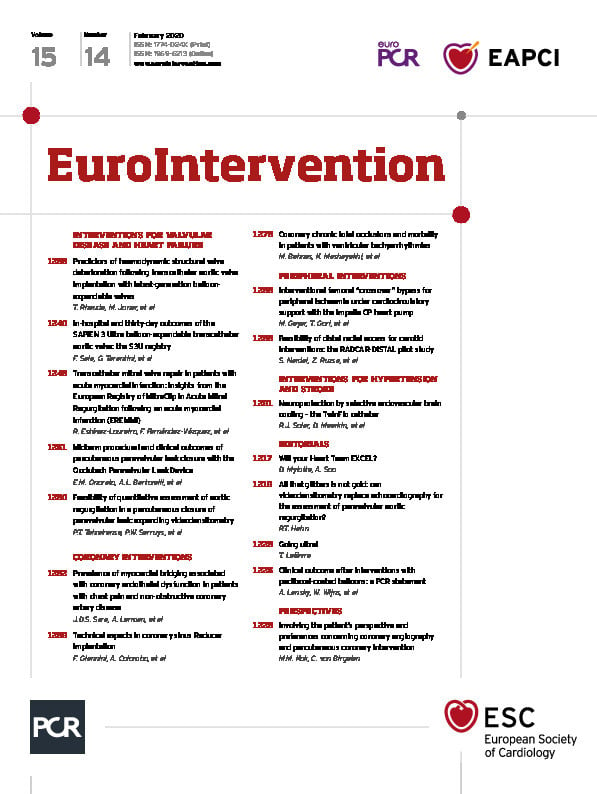
We have carefully read the manuscript of Harnek et al. We congratulate the authors for the publication of the most important registry to date regarding the clinical follow-up of covered stents (CS)1. Undoubtedly, the study provides very interesting information; however, we would like to raise some further points for consideration.
We believe that the results are not easily interpretable since the CS were used in very different clinical scenarios. In addition, the authors do not provide information on what CS type was used in each indication, which could have interfered with the results.
Given the significant differences in the design of CS, especially between the first generation, with two stent layers, and the latest generation with a single layer and thinner struts which should lead to a better and faster endothelialisation, the conclusions drawn from the overall CS group cannot be extrapolated to each type of CS nor to each indication in which they were implanted.
In addition, it must be taken into account that the unsuccessful attempts to implant a covered stent were not considered and that no information was provided on whether the CS were implanted inside previous ones (which is not unusual since coronary perforations can occur after a stent implantation). Moreover, during the last years of the registry, the better deliverability of the Papyrus stent (Biotronik, Bülach, Switzerland) could have led operators to use it in more complex scenarios, which could have acted as a negative factor in its results2.
Finally, it is also difficult to draw conclusions from the comparison of CS with non-covered stents, since again the clinical context in which they were implanted may not have been the same. This fact could negatively influence the prognosis of CS patients.
Even ignoring this fact, we must bear in mind that some adverse events of CS patients were not due to the stent (which probably saved the patient’s life) but to the haemodynamic situation that led to its implantation (coronary perforation and cardiac tamponade).
It is reassuring to observe how the mortality rate after one month was not different in patients with CS or non-covered stents. As expected, other adverse events, such as the rates of in-stent restenosis, stent thrombosis or target lesion revascularisation, were higher in the CS group when compared with non-covered stents. These results can be explained by the different designs of the CS, especially that of the first generation with a double metal layer.
To summarise, in our opinion, no conclusions can be drawn from the comparison between CS and non-covered stents nor can we extrapolate overall CS results to each one of the CS types. New-generation CS should be utilised preferentially for better deliverability and possible lower thrombogenicity. Specific data on these stents are needed to draw conclusions.
Conflict of interest statement
The authors have no conflicts of interest to declare.
Supplementary data
To read the full content of this article, please download the PDF.




